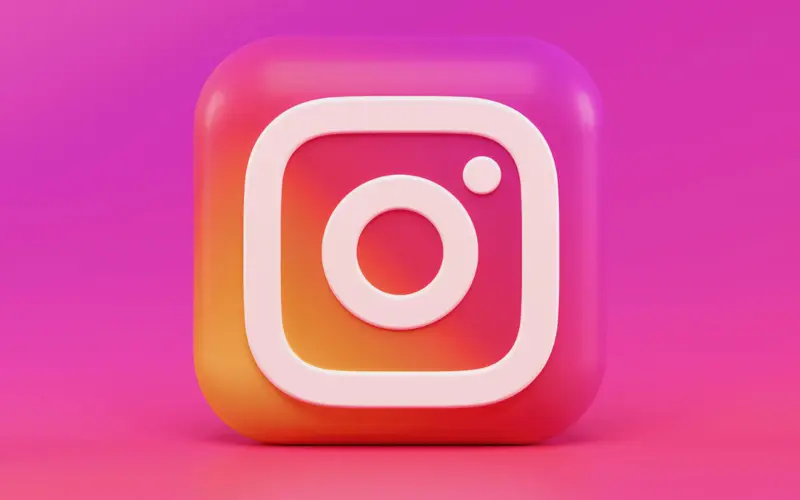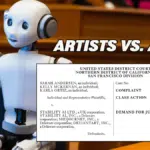In a new development in the ongoing legal saga over photo embedding, Instagram has been hit with a class action lawsuit. Do the plaintiffs have a case?
I finally had a chance to take a closer look at the new copyright class action complaint filed last week against Instagram. In a nutshell, the lawsuit alleges that the social media app induced and contributed to “widespread copyright infringement” by allowing third parties to embed photos from public Instagram feeds onto their own websites.
In full disclosure, as an amateur concert photographer who’s occasionally had my photos embedded on other sites, I’m technically a member of the proposed class. There’s a decent chance you’re a member too. The complaint (read here) seeks to represent the interests of pretty much any Instagram user who’s had one of their photos embedded by any third party without their express permission since 2013. That’s the year Instagram announced the introduction of its “web embed” feature, which allows Instagram users to share publicly-accessible photos and videos posted to the app.
What is Embedding?
As I explained in an earlier post, embedding is a type of linking that allows an image posted on Instagram to appear on another website while still stored on Instagram’s servers. While the difference between embedding and simply copying an Instagram image may have legal significance (as I’ll discuss below), from the perspective of the viewer, it’s fairly seamless. The version of the image on the left is embedded from my public Instagram feed. The version on the right has been copied and stored separately on the WordPress server for Copyright Lately:
What Does the Lawsuit Allege?
The new class action lawsuit, filed in the Northern District of California, alleges that Instagram’s embedding tool allows (and in fact encourages) online publishers to commit copyright infringement. It does so by giving these third parties the technological means necessary to display copyrighted images without the copyright owners’ permission. The complaint principally alleges three theories of secondary copyright liability against Instagram:
- Inducement of Copyright Infringement—asserting that Instagram actively encourages and promotes the use of its embedding tool by third parties to infringe its users’ copyrights.
- Contributory Copyright Infringement—alleging that Instagram facilitates and materially contributes to third party infringement of its users’ photos by providing the tools needed to infringe.
- Vicarious Copyright Infringement—claiming that Instagram has the right and ability to control and prevent the infringing activities of third party embedders, while directly benefiting from their infringing activities via increased user traffic and revenue to the Instagram app.
It’s important to recognize that all of these causes of action are based on alleged indirect infringement by Instagram, which will require the plaintiffs to establish that the acts of embedding performed by third party websites constitute copyright infringement in the first place. The plaintiffs aren’t alleging that Instagram is itself committing any direct acts of copyright infringement. That’s because when you sign up for an Instagram account, you agree to give Instagram a license to display your copyrighted works as a condition of using the app.
What Prompted the Lawsuit?
Somewhat ironically, the lawsuit against Instagram may have been self-inflicted. That’s because, by signing up for an Instagram account and agreeing to the app’s terms, you don’t merely grant the service a license to display your works. You also agree that Instagram is able, if it so chooses, to sublicense that right to third parties without any further permission.
Prior to June 2020, there had been a widely-held belief that Instagram, by making its embedding feature available for all public accounts, had in fact exercised its right to sublicense permission to third parties. This belief was bolstered by the company’s public description of its embedding tool, which Instagram described in a blog post as “an easy way to add Instagram photos and videos to the stories you want to tell.” Instagram assured its users that they still owned their photos and videos, even if others chose to embed that content on their own websites. “Whether you want to embed your video on your blog or a friend wants to feature your photo on a website, everyone will clearly see that your content belongs to you.”
But on June 4, 2020, Instagram shocked everyone when, in an email sent to tech blog Ars Technica, a company spokesperson said that while Instagram’s terms gave it the right to grant a sublicense to third party users, it had not actually availed itself of that right.
While our terms allow us to grant a sub-license, we do not grant one for our embeds API …. Our platform policies require third parties to have the necessary rights from applicable rights holders. This includes ensuring they have a license to share this content, if a license is required by law.
Email from Facebook to Ars Technica, June 4, 2020
In the words of Ars Technica, Instagram “just threw users of its embedding API under the bus.” What wasn’t clear at that time was that Instagram may have also just walked itself into a lawsuit.
Do the Plaintiffs Have a Case?
As I noted above, all of the causes of action against Instagram are rooted in secondary liability. This means that before the parties even get to issues like inducement and control, the plaintiffs will need to establish that the third parties have themselves committed copyright infringement by embedding Instagram photos on their sites.
This is where Instagram benefits from being sued in California. That’s because the Ninth Circuit has historically followed what’s called the “server test.” The server test effectively insulates online publishers who link to outside content from liability for copyright infringement.
As shown in my Billie Eilish example above, while photos linked to Instagram may look the same as those hosted on a third party server, there’s an important technological distinction between these two ways of rendering a photo on a website. When you copy a photo, upload it to your website and make the site available to the public, you’re implicating several of the copyright owner’s exclusive rights in the photo, including the right to reproduce copyrighted content and to display that content publicly.
But when you use Instagram’s API and insert embed code into your site, a copy of the photo isn’t hosted on your web server. Instead, the code instructs a visitor’s web browser to fetch the contents of a post directly from Instagram’s own servers. Your site is essentially acting as a “window” to Instagram. It’s Instagram, not your site, that ultimately directs the content that’s displayed to your visitors.
The server test was explicitly recognized and adopted by the Ninth Circuit in Perfect 10, Inc. v. Amazon, Inc., a case involving the display of copyrighted images in Google image search results. The server test has also been followed by the Seventh Circuit, at least in cases involving contributory liability.
While there have been several high-profile lawsuits recently in which judges have called into question the legitimacy of the server test, those cases have been primarily litigated in New York, within the Second Circuit. By filing their putative class action lawsuit in California, the plaintiffs in the new case are likely to run headlong into what is (at least for now) controlling Ninth Circuit precedent upholding the server test.
What’s the Bottom Line?
While Instagram’s decision not to grant an explicit sublicense to third party embed users was the likely catalyst for the plaintiffs’ lawsuit, in the end, it may not matter. If those users wouldn’t need permission to embed in the first place, they wouldn’t be liable for copyright infringement, which means that Instagram couldn’t be liable on a secondary theory.
I’ll be following the new class action lawsuit against Instagram and will report on any developments as they arise. In the meantime, drop me a line with any comments or questions you may have. A copy of the complaint is below.
UPDATE—September 17, 2021. Judge Breyer has dismissed the Instagram class action lawsuit in a short five page opinion (read here). The court is bound by the server test. While Hunley is free to argue to the Ninth Circuit or Supreme Court that the test misinterprets the Copyright Act, “this court is not free to artificially narrow or overrule binding precedent.”
View Fullscreen







2 comments
Thank you Aaron for the interesting article.
Don’t you think that the main consideration should be whether there is a suitable contract between the parties in the first place i.e a specific clause in the “terms and conditions” saying that Instagram has the permission to let users use the photos?
Otherwise the result might be that every photo uploaded to the net cuold be used endless times by emnedding technologies?
Hi Moti,
Instagram’s Terms of Use do provide that users grant Instagram a “non-exclusive, fully paid and royalty-free, transferable, sub-licensable, worldwide license” to the content they post.” So Instagram would likely have the right (if it chose to take advantage of it) to allow its users to embed posted content.
But to your point, at least two major circuits (the Seventh and the Ninth) have held that embedding simply doesn’t give rise to a copyright violation in the first place, because there is no copying or public distribution involved. There’s also no violation of the display right if the image is served up from Instagram’s own servers.
A few years ago, a judge in the Southern District of New York did take a contrary view in Goldman v. Breitbart News. That court held that the Server test wasn’t consistent with the spirit of the Supreme Court’s 2014 Aereo decision, in which the court rejected the notion that technical distinctions could absolve defendants of liability for copyright infringement. But it’s still an open issue, even within the Second Circuit.
By the way, one recent study found that nearly 25% of online news articles contain embedded links to social media posts – so the practice is already quite prevalent.